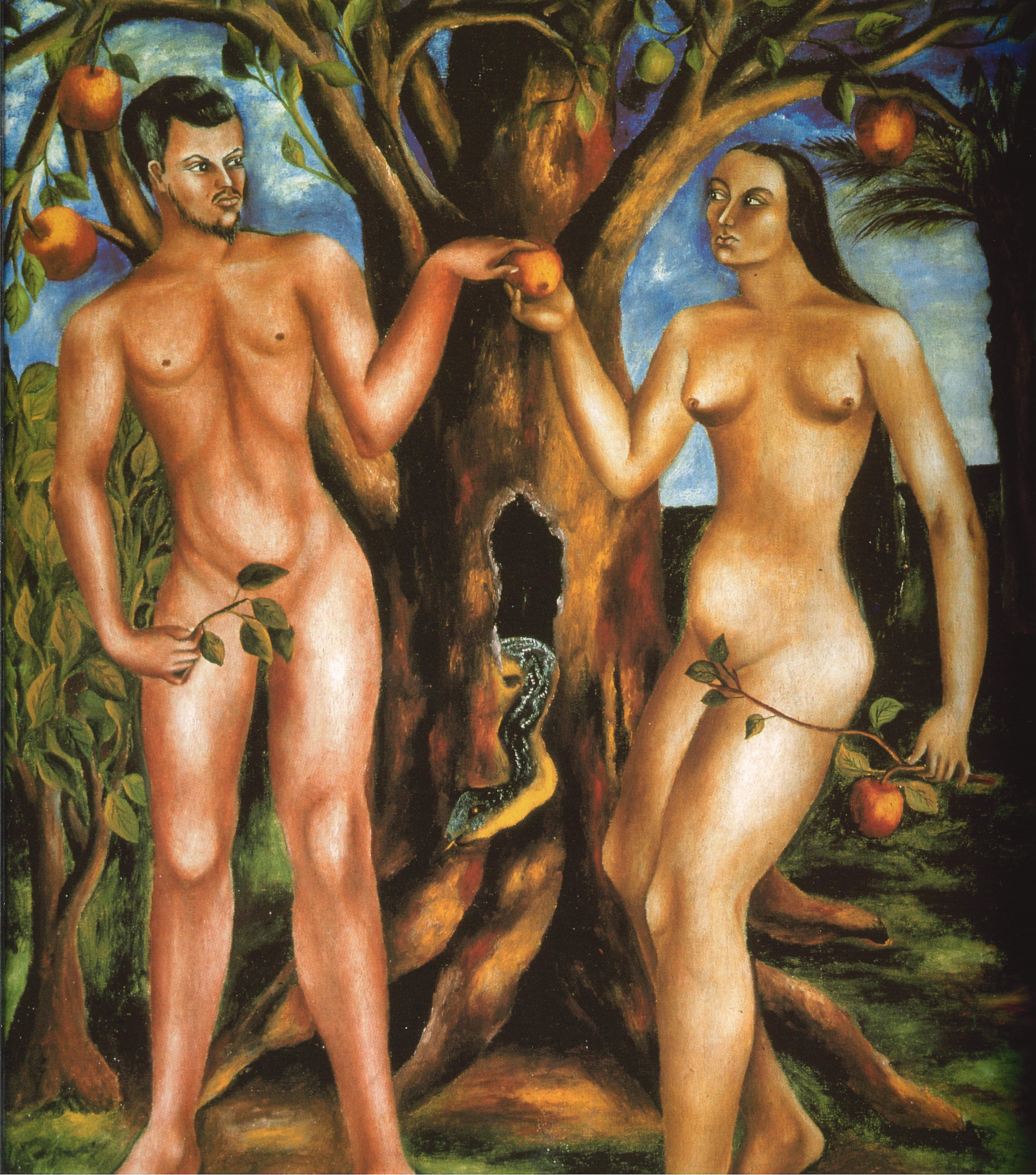
Adam and Eve
Author: María Izquierdo
Name: Adam and Eve (Adán y Eva)
Date: 1946
Material: Unknown
Material: Oil on canvas
Dimensions: 41.38 × 33.5 inches (105 × 85 cm)
Collection: Private Collection
In Adam and Eve (Adán y Eva, 1946), María Izquierdo returns to the biblical story of creation with a distinctly Mexican interpretation, building on themes she explored in her earlier works The Creation (1940) and Adam and Eve (1945). While other Mexican muralists like Diego Rivera used creation themes to symbolize a national rebirth following the Mexican Revolution, Izquierdo’s approach remains more intimate and personal. Her interpretation reflects an introspective engagement with spirituality, using the figures of Adam and Eve to explore human origins and the mystical dimensions of creation.
In contrast to her earlier Adam and Eve (1945), where the figures were depicted as painted folk-art statues surrounded by an array of objects evoking Mexican devotional and domestic traditions, this later version adopts a more naturalistic style. Here, Adam and Eve are shown as a mestizo couple, grounding the biblical narrative within Mexico’s unique cultural and racial heritage. This depiction aligns them with the land, symbolizing an intrinsic connection between creation and Mexican identity. The Tree of Knowledge twists between them, bearing forbidden fruit, while the serpent coils at the tree’s base—a silent witness to the couple’s transgression. This composition reflects Izquierdo’s shift toward a more contemplative and grounded exploration of the creation theme.
Building on the solitary figure in The Creation (1940), who stood in an otherworldly landscape, Izquierdo’s 1946 Adam and Eve presents a fully realized pair, standing together in a symbolic landscape that blends Catholic iconography with indigenousIndigenous and folk symbolism. Unlike Rivera's grandiose and socially charged creation scenes, Izquierdo’s focus is on the quiet, mystical underpinnings of the story. By reimagining Adam and Eve as mestizos, she aligns Mexico’s cultural genesis with the biblical origin of humanity, offering a vision of creation that is universal yet deeply rooted in her nation’s spiritual and cultural identity. Through this progression across her works, Izquierdo invites viewers to reflect on the intersection of personal, national, and spiritual creation stories, connecting Mexico’s past with its evolving identity.